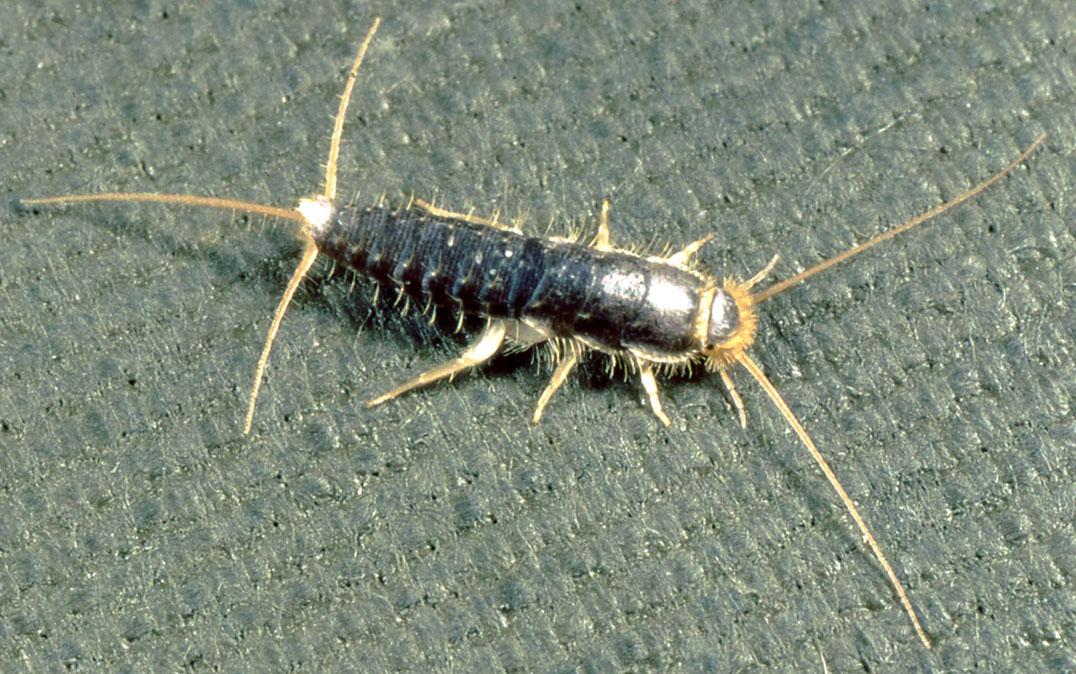Research News
It Takes Guts: How Midgut Development in Insects Reveals Their Evolutionary Past

A research group led by the University of Tsukuba finds that the midgut epithelium in firebrats (Thermobia domestica) arises solely from yolk cells, and that bipolar formation of this tissue likely began in Pterygota
Tsukuba, Japan—Insects have been around for millions of years, but their evolutionary relationships are still not fully known. Now, researchers from Japan have discovered that an old insect lineage can contribute to a clearer picture of their past.
In a recently published study in Arthropod Structure and Development, a research group led by the University of Tsukuba has revealed that by studying the gut development of insects known as firebrats, the relationship between the ancient wingless and more modern winged insects can be revealed.
Zygentoma, the taxonomic order that includes silverfish and firebrats, is an ancient group of fast-moving apterygotes (wingless insects). Zygentoma is a sister group to Pterygota (the winged insects), and together they comprise Dicondylia. Dicondylia (insects with a mandible attached to the head with two hinges) includes all insects except the jumping bristletails and entognathous (i.e., with mouthparts enclosed within the head capsule) apterygotes.
One area of particular interest regarding insect evolution is the formation of the midgut epithelium, because differences in the way this tissue forms during development reflect the evolutionary steps between groups. "Reports on the origin of this tissue in Zygentoma have been mixed," says Professor Ryuichiro Machida, senior author of the study. "Some indicate that it is derived only from yolk cells, as in other wingless orders, while others indicate a dual origin similar to that in Palaeoptera including mayflies (Ephemeroptera) and dragonflies (Odonata) - the primitive winged insects - within Pterygota."
In several of the older wingless hexapod lineages, including Archaeognatha (jumping bristletails) and entognathous apterygotes (Protura, Collembola, and Diplura), this tissue develops from the yolk cells alone; this is considered one of the ground plan features or a fundamental aspect of hexapods (a group that comprises most arthropod species, including insects). In Neoptera - the group of insects that can flex their wings over their abdomens, and includes most winged insects - the midgut epithelium arises from anlagen (embryonic areas capable of forming a part or organ) that differentiate at or near the ends of the developing foregut and hindgut. This process is called bipolar formation.
In Palaeoptera, the midgut epithelium has two origins. The epithelium at the midpoint of the midgut originates from yolk cells, while at the front and rear of the midgut, this tissue is formed via bipolar formation. This developmental aspect of the Palaeoptera represents the evolutionary transition between wingless insects and neopterans.
The research group studied the midgut epithelium in the firebrat, Thermobia domestica, and found that it was derived solely from yolk cells, without the foregut and hindgut origins. They concluded that the involvement of the anlagen as described above in bipolar formation likely originated in Pterygota rather than Dicondylia.
This study sheds light on the evolutionary stages of insect development. Future studies will need to examine differences between how bipolar formation occurs in Palaeoptera, in which the method of formation is considered to be ancestral, and in Neoptera, in which it is likely derived.
###
This work was supported by the JSPS (Japan Society for the Promotion of Science) KAKENHI: Grant-in-Aid for JSPS Research Fellow, JP20J00039 to SM; Grants-in-Aid for Scientific Research C, JP19K06745 to MM and JP19K06821 to RM.
Original Paper
The article, "Revisiting the formation of midgut epithelium in Zygentoma (Insecta) from a developmental study of the firebrat Thermobia domestica (Packard, 1837) (Lepismatidae)," was published in Arthropod Structure and Development at DOI: 10.1016/j.asd.2023.101237
Correspondence
Visiting Professor MACHIDA Ryuichiro
Sugadaira Research Station, Mountain Science Center, University of Tsukuba



